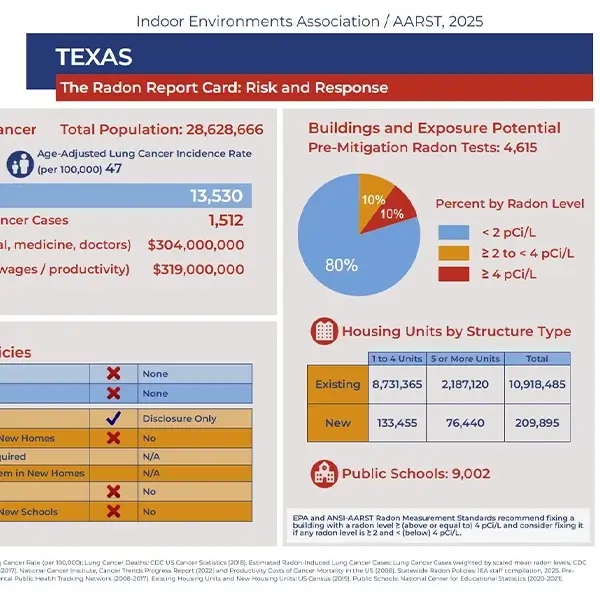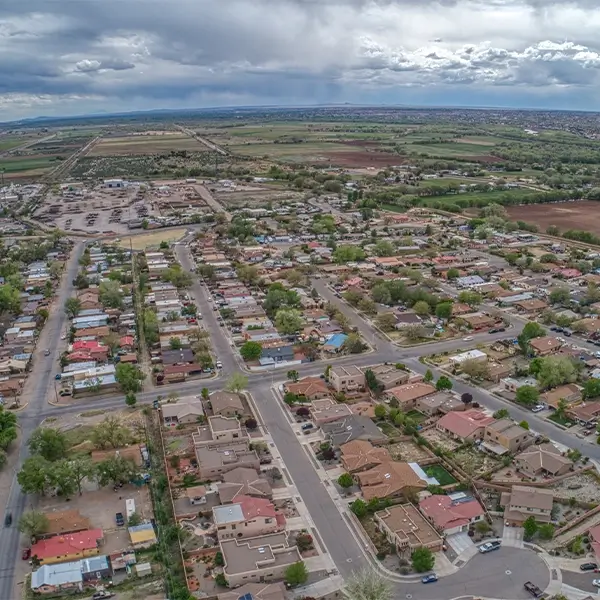Radon Testing Overview
Radon is a colorless, odorless, radioactive gas that occurs naturally. When radioactive elements in the ground break down, they release radon into the surrounding soil, which eventually rises and releases into the air. If this occurs underneath your home, radon gas can seep in through cracks or gaps in the foundation and begin to build up inside the lower floors of the property.
Radon is carcinogenic, and is the leading cause of lung cancer for non-smokers in the United States. If you allow radon to build up in your home with no mitigation system installed, you may put your family at increased risk to their health.
Radon levels can vary greatly throughout New Mexico, Texas, and Colorado. Although levels are generally lower in the Southwest, each of these states have a potential for moderate or high levels of radon, so homeowners in this region should have their property tested for radon.
Quick Navigation
How to Have Your Home Tested for Radon
The best way to have your home tested for radon is to hire a certified Radon Measurement Professional (RMP) to give you the most detailed and accurate testing results. A radon test will include:
Our NRPP Certified Radon Measurement Professionals have received extensive training in both radon testing and radon mitigation. If you have concerns about radon in your residential or commercial property, contact us today to schedule a radon test!
VIEW OUR REVIEWS ON GOOGLE
FROM OUR SATISFIED CLIENTS
Had home radon evaluation and remediation conducted. Owner Lynn was very professional and thorough with the process. Answered all our questions and found most effective and convenient location for remediation system install. Successfully got our high radon levels under the recommended levels. Highly recommend for this and any other services.
He responded immediately and set an appointment that was convenient for me. He arrived early for the appointment and started work immediately. I found his report to be very thorough and efficient with extra resource information attached.
I would highly recommend them… incredibly thorough & professional. Their communication throughout the entire process was timely, effective & accurate. Completely happy with their overall service & would use them again in a heartbeat!
LEARN FROM THE RADON EXPERTS
OUR RADON MITIGATION RESOURCES
Radon Resources: IEA Radon Report Cards
The Indoor Environments Association (IEA), formerly AARST, is a nonprofit dedicated to improving indoor air quality through ethical, science-based standards, including radon mitigation. One of their key resources is the annual Radon Report Cards, which use federal data to evaluate each state's radon policies, testing rates, and health impacts.
Oklahoma Homes Need Radon Testing & Mitigation
Oklahoma sees an estimated 312 radon-induced lung cancer cases per year. Despite these numbers, most homes and businesses in Oklahoma remain untested, and existing policies do little to address the issue.
New Mexico Homes Need Radon Testing & Mitigation
Radon exposure is a genuine concern for many New Mexico communities, with significant radon levels documented across various counties that dramatically exceed the EPA's recommended action threshold.


